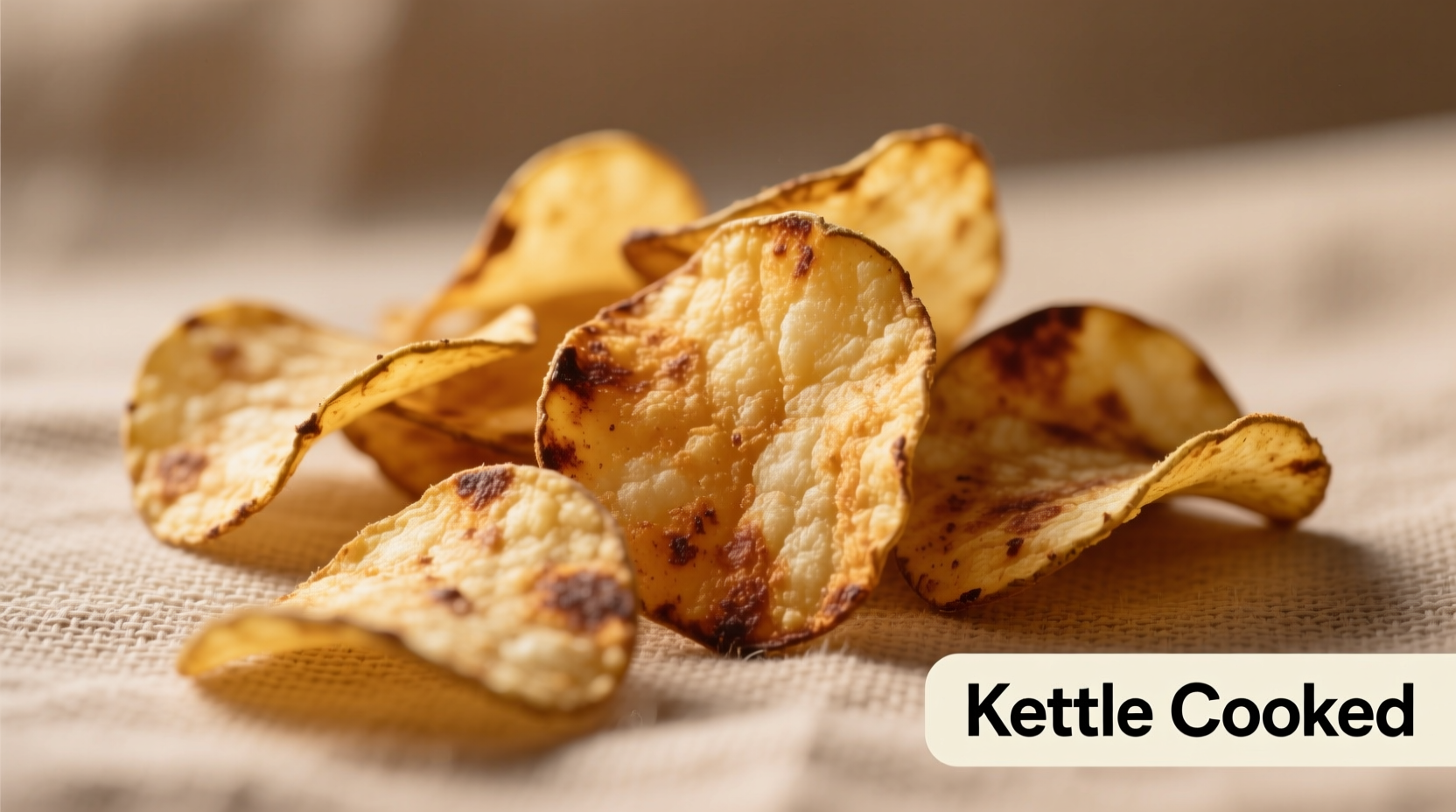Understanding the Kettle Cooking Process
When you see "kettle cooked" on food packaging, particularly potato chips or snacks, it indicates a specific preparation method with historical roots. Unlike modern continuous frying systems, kettle cooking involves batch processing in deep, heavy pots that were traditionally made of copper or iron.
The process begins with cold oil in a deep kettle. Raw ingredients—typically sliced potatoes—are added to the cold oil, which is then gradually heated. As the oil temperature rises, moisture slowly evaporates from the food. Once the oil reaches optimal frying temperature (usually 325-350°F), the cooking continues until the desired crispness is achieved. This gradual heating process creates a distinctive texture that's thicker and crunchier than conventionally fried counterparts.
Evolution of Kettle Cooking: From Hearth to Modern Production
Kettle cooking represents one of the oldest frying techniques, with origins tracing back centuries before industrial food production:
- Pre-1800s: Home cooks used heavy cast iron kettles suspended over open fires to fry foods in small batches
- Early 1800s: Commercial production began with manual batch frying in copper kettles
- 1920s: First mechanized kettle cooking systems introduced, maintaining batch processing principles
- 1960s: Continuous frying systems became dominant for mass production, creating thinner, lighter chips
- 1970s: Artisanal "kettle cooked" chips reemerged as premium products emphasizing traditional methods
- Today: Modern "kettle cooked" production uses specialized equipment that simulates traditional batch processing while meeting food safety standards
Kettle Cooked vs. Conventional Fried: Key Differences
The distinction between kettle cooked and conventionally fried foods goes beyond marketing. These methods produce measurable differences in texture, flavor, and appearance:
| Characteristic | Kettle Cooked | Conventionally Fried |
|---|---|---|
| Batch Size | Small batches (50-100 lbs) | Continuous flow (thousands of lbs) |
| Cooking Process | Cold start: ingredients added to cold oil | Hot oil immersion: ingredients added to preheated oil |
| Texture | Thicker, more irregular, substantial crunch | Thinner, uniform, lighter crispness |
| Oil Absorption | 15-20% less oil due to gradual heating | Higher oil absorption from immediate hot oil contact |
| Flavor Development | Deeper caramelization, more complex flavor notes | Milder flavor profile, more neutral taste |
Identifying Authentic Kettle Cooked Products
Not all products labeled "kettle cooked" follow traditional methods. Understanding the context boundaries helps identify authentic kettle cooked items:
True kettle cooked products typically show these characteristics:
- Visual texture: Irregular shapes with visible thickness variations (usually 0.06-0.08 inches vs. 0.03-0.04 for regular chips)
- Surface appearance: Matte finish rather than glossy sheen
- Structural integrity: Holds dips better without breaking
- Sound profile: Distinctive loud crunch when bitten
- Ingredient list: Typically contains only potatoes, oil, and salt (fewer additives)
According to research from the Institute of Food Technologists, the gradual heating process in authentic kettle cooking triggers different Maillard reaction patterns compared to conventional frying, creating more complex flavor compounds.

Practical Applications Beyond Potato Chips
While most associated with potato chips, the kettle cooking method applies to various foods:
- Confectionery: Traditional hard candies and toffees often use kettle cooking for precise temperature control during sugar boiling
- Snack production: Some pretzels, cheese snacks, and vegetable crisps benefit from kettle cooking's texture development
- Home cooking: The technique works well for small-batch frying of items like French fries, doughnuts, or beignets
- Industrial applications: Specialty snack producers use modified kettle systems for premium product lines
Home Kettle Cooking Techniques
You can replicate professional kettle cooking methods at home with standard equipment:
- Use a heavy-bottomed Dutch oven or deep cast iron pot (3-5 quart capacity)
- Add enough oil to submerge ingredients completely (about 2-3 inches)
- Place sliced potatoes (or other ingredients) in cold oil
- Heat gradually over medium heat to 325°F
- Maintain temperature for 8-12 minutes until golden brown
- Remove with slotted spoon and drain on paper towels
- Salt immediately while still warm
This method produces restaurant-quality results with the distinctive thick crunch associated with commercial kettle cooked products. The key difference from conventional home frying is starting with cold oil rather than preheating it.
Common Misconceptions About Kettle Cooking
Several myths persist about kettle cooked foods:
- "Kettle cooked means healthier": While some studies suggest slightly lower oil absorption, nutritional differences are minimal. The primary distinction is texture, not health profile.
- "All thick chips are kettle cooked": Some manufacturers create thick-cut chips using conventional frying methods, so thickness alone doesn't indicate true kettle cooking.
- "Kettle cooked is always artisanal": Many large manufacturers now produce kettle cooked items using automated systems that simulate traditional batch processing.
- "Kettle cooking requires special equipment": While commercial producers use specialized kettles, the technique can be replicated with standard home cookware.
Understanding these distinctions helps consumers make informed choices based on actual product characteristics rather than marketing terminology.
Why Kettle Cooking Matters Today
In our era of industrial food production, the resurgence of kettle cooked products represents more than just a textural preference. It reflects growing consumer appreciation for traditional food preparation methods that prioritize quality over quantity. The distinctive crunch and flavor profile of authentic kettle cooked snacks offer a sensory experience that connects modern consumers with culinary traditions spanning centuries.
As food science continues to evolve, researchers at institutions like Cornell University's Food Science Department are studying how traditional cooking methods like kettle frying affect flavor compound development and nutritional profiles, potentially informing future food production innovations.











 浙公网安备
33010002000092号
浙公网安备
33010002000092号 浙B2-20120091-4
浙B2-20120091-4